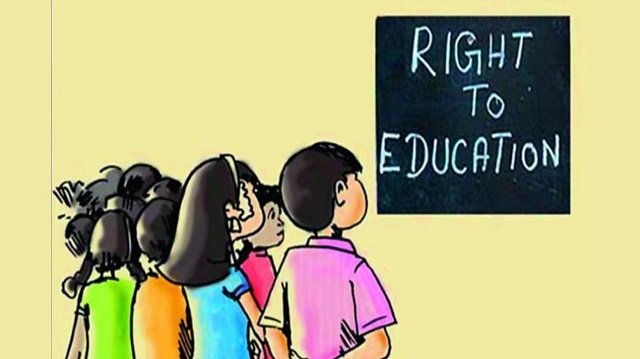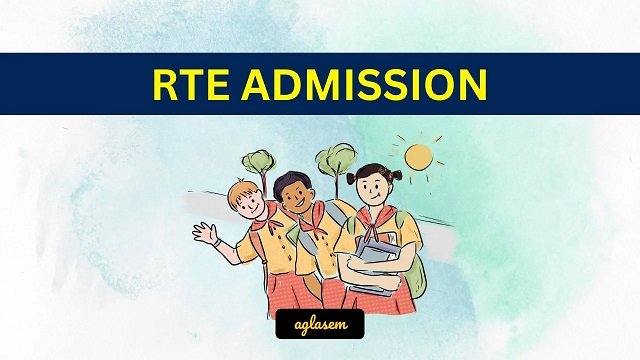The Right to Education is crucial for an individual to gain the necessary education to develop their skills for a better future. Indeed, in this article, we are going to discuss about the RTE Admission. So, curl up in front of your screen and dangle with this article! However, it is a constitutional bill that ensures that each and every person gets a formal education. Further, if you do have not as much knowledge or want to know more about the right to education. Then, hold your fire! Surely, this article will be a plethora and solve all the concerns of yours. Evidently, as a human right, the right to education is the most fundamental. It demonstrates a way of life changes one thinking and makes one prudent. Indeed, let’s explore RTE with this article!
What is the Right to Education?
The Right to Education Act (RTE) was approved by the Indian government in 2009. Certainly, it ensures that every child between the ages of 6 and 18 has the right to receive free and compulsory education. Undoubtedly, this law makes education a fundamental right for children in India. With the implementation of RTE, India joined 134 other nations worldwide that recognize and enforce the right to education. Evidently, the act aims to make quality education accessible to all children. However, it promotes inclusivity and ensures that no child is deprived of education due to financial constraints.
Why the Right to Education is crucial for an individual?
The right to education is crucial because it provides a right to every child in your country to get the needed education. However, it is crucial to develop the skills of a person for a better future. Certainly, proper education takes financial security and stability in life. Further, quality education also narrows the social gap by elevating the disadvantaged groups of the social order. Absolutely, it improves logical skills and leads to building confidence which helps in taking the right decision. Additionally, it helps the person to express their feeling in a better way. Surely, quality education makes the person sensible which leads to reducing crimes and makes society a better more peaceful place to live in.
Features of the RTE Admission Act?
The Act refers to confirms that primary education is compulsory and free for all children. Moreover, it ensures that schools have separate clean toilets for boys and girls. Besides with free drinking water and maintains fixed teacher-student ratios in classrooms. The law mandates the placement of children in classes based on their age and provides assistance if they fall behind in the curriculum. In addition, the Act ensures that teachers are adequately trained and establishes their qualifications. It guarantees rights to all children, prohibits discrimination or harassment, and prohibits the detention or removal of children without parental consent. Additionally, private schools are required to reserve 25% of seats for students from disadvantaged backgrounds. However, it contributes to a wide-ranging education system. After that, there are strict rules and censorship mechanisms implementing these policies and protecting the rights of all children in schools.
25% Quota for Poor
The Supreme Court on April 12, 2012 declared the constitutionality of the Free and Compulsory Education of Children Act, 2009. However, the Act mandates that all schools including private ones provide free education for students. With socio-economic disadvantage 14 from first grade Background for years.
The Court rejected the objection raised by the aided private schools against Section 12(1)(c) of the Act. This section requires each accredited school to admit children from economically disadvantaged sections of its community. Even if they do not receive financial aid. Specifically, the decision ensures that private schools also have an obligation to provide education to children from less privileged backgrounds.
What are the eligibility criteria to avail the RTE Admission?
Minimum age for LKG: The age for LKG (Lower Kindergarten) is determined on the basis of the child’s birth certificate.
RTE Act requirements: The Right to Education (RTE) Act requires all private schools to reserve 25% of their seats for children from weaker sections.
Eligibility on the basis of family income: Families with income of Rs. 3.5 lakh or less can apply for these reserved seats under the RTE Act.
Eligibility for special cases: Children who are orphans, have special needs, belong to migrant worker families, or are children of street workers are also eligible for admission under the RTE Act.
Admission Process Under the RTE Act
The first step in applying for schools under RTE quota is to search for eligible schools in your area. After that, you can find information about schools in your state online.
Parents who choose to admit their children using the quota have to go through the official website. Thereafter, fill the given forms. Once you have completed the form, print it.
You can then submit the form with the relevant documents to the relevant authorities at the school of your choice. The child is guaranteed access to public schools. Private schools must admit 25% of students under this law.
Documents Required for RTE Admission
- Government IDs of parents
- Child’s ID
- Caste certificate
- Income certificate from the Revenue Department of India.
- Relevant certificates to prove that a child has special needs. This will be provided to you by the Department of Health.
- In case of a street child or a child of a migrant worker, an affidavit must be produced that is issued from the Labor Department, Department of Education, and Department of Women & Child Development.
- Photographs of the child.
- If the child is an orphan, the death certificate of both parents must be produced.
What are the significant challenges faced by the education system in India?
- Expense on education
- Expensive higher education:
- Capacity utilisation
- Infrastructure facilities
- Wastage of resources:
- General education-oriented
- Student-teacher ratio
What are the reason that education should be free in India?
- Free education helps in the reduction of poverty and crimes
- It encourages the more parents to enrol their children in educational institution instead of forcing them to work.
- However, in India specifically from lower income group have more than two children. As a result, paying of the school fees becomes more difficult to the family.
- By providing free education it boosts the economy and technology in the future.
What are the Other Major Government Policies that have shaped Indian Education System?
1950 Constitutional Mandate
National Policy of Education 1986
Shri Unnikrishnan judgment 1993
Mid-day Meal Scheme 1995
Education Ministers’ Resolve 1998
Sarva Shiksha Abhiyan (SSA) 2001
Article 45

Final words
In brief, we have discussed about the RTE Admission from its significance to the challenges. Indeed, education is a must for each and every person in the country. Moreover, it is one of the most important fundamental rights. However, if you found this article informational, then let us know with your comments. Toddles!
AUTHOR- Sahil Jamwal


